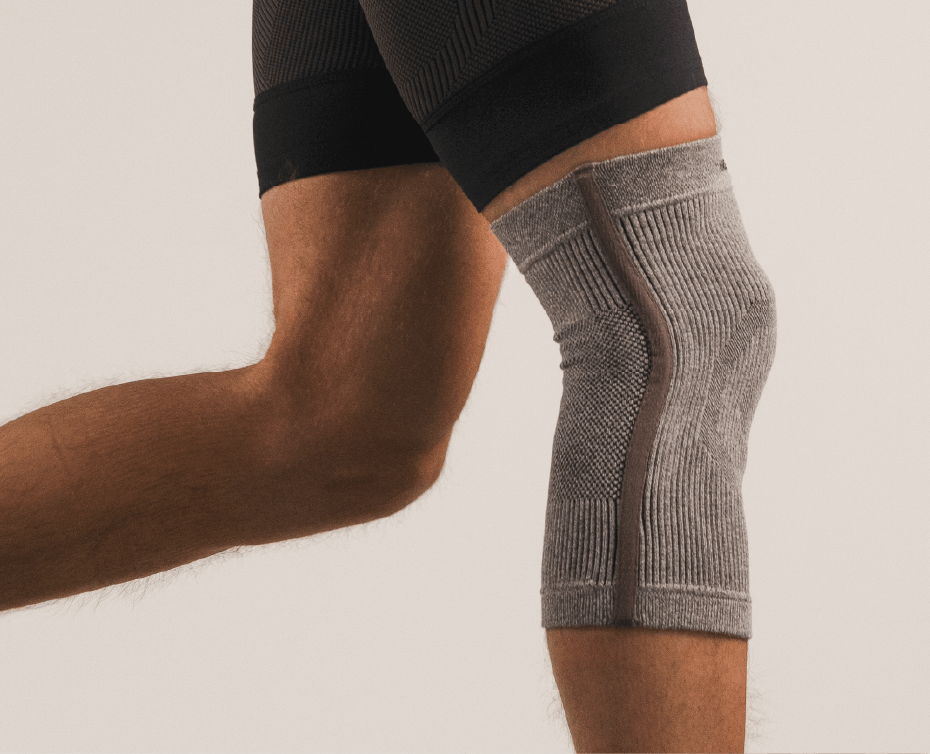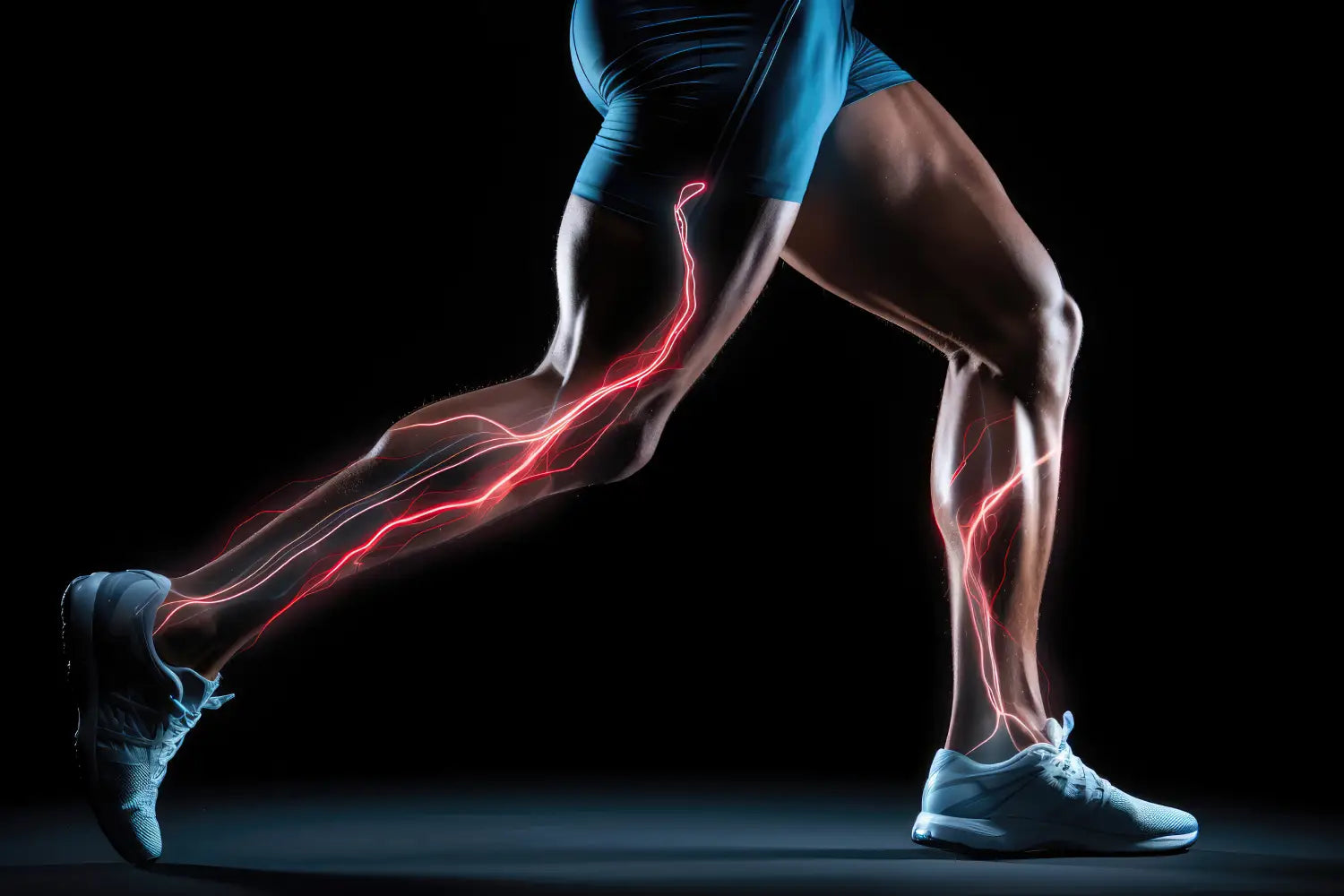Medically Reviewed By | Dr. Kate Panawash, PT, NCS, DPT
Circulation, the vital process that delivers oxygen and nutrients to every cell in our body, plays an undeniable role in maintaining our overall well-being. Think of it as the unsung hero of our body's many functions.
As crucial as the heartbeat that echoes life, proper blood flow ensures our feet and legs remain vibrant and agile. Yet, not all of us know how our lifestyles or underlying health conditions may compromise this essential function.
Some subtle signs are often brushed aside and can hint at underlying circulatory challenges. Understanding these signs and the essence of circulation is the first step to embracing a healthier, more active life.
What Is Poor Circulation?
At its core, poor blood circulation indicates that the body isn't efficiently sending blood to its extremities, particularly the feet and legs. This inefficiency stems from the interplay of blood vessels, blood flow, and blood pressure.
Our circulatory system, an intricate network of arteries, veins, and capillaries, relies on steady blood pressure to transport blood laden with oxygen and nutrients. Circulation suffers when there's a kink in the system, whether due to constricted blood vessels or other complications.
Conditions like peripheral artery disease (PAD) and atherosclerosis come into play here. PAD results from narrowed arteries reducing blood flow to the limbs, while atherosclerosis deals with the hardening of arteries because of plaque buildup.
Both conditions, common culprits behind poor leg circulation, can drastically reduce the quality of life if not addressed.
What Are the Signs of Poor Circulation in Legs and Feet?
Noticing the initial signs of compromised circulation can be a game-changer.
Here are some symptoms to watch out for:
- Cold feet: An unexpected chill in the feet, even in warmer settings.
- Hair loss on legs: Unusual thinning or absence of hair.
- Cramping: Regular cramps, especially during activities or at night. Katelyn Panawash, Doctor of Physical Therapy (DPT) and Board Certified Neurologic Clinical Specialist (NCS), notes this most commonly occurs in the calves, but may also affect the hip and thigh muscles.
- Claudication: Pain or cramping in the legs with walking or activity that improves with rest.
- Ulcers on the feet or legs: Non-healing sores or spots.
- Neuropathy: Numbness or tingling sensations, often described as "pins and needles."
Being vigilant of these symptoms can pave the way for timely interventions and better overall health.
What Causes Poor Circulation?
While the symptoms of poor circulation are clear, understanding the underlying causes can shed light on effective countermeasures.
Various factors can impede optimal blood flow to the legs and feet:
- Peripheral Artery Disease (PAD): As touched upon earlier, PAD arises when arteries narrow, often due to plaque buildup, restricting blood flow to extremities.
- High Blood Pressure: Elevated blood pressure can damage blood vessels over time, hindering the circulatory system's efficiency.
- High Cholesterol: Accumulation of cholesterol in arteries can lead to blockages, disrupting smooth blood flow.
- Obesity: Carrying excess weight can strain the circulatory system, causing reduced blood flow to the lower extremities.
- Diabetes: High blood sugar levels, common in diabetes, can harm blood vessels and nerves, leading to decreased circulation.
- Cardiovascular Disease: Conditions directly affecting the heart and blood vessels influence the circulatory system, often diminishing blood flow to various body parts.
Knowing the root causes provides a blueprint for devising targeted strategies to combat poor circulation, ensuring a vibrant and agile life.
What Are Natural Ways To Support Circulation?
While medical treatment is indispensable for severe cases, adopting natural measures can significantly bolster circulation:
- Stay Active: Regular low-impact exercises, like walking or swimming, can keep the blood pumping efficiently. Dr. Panawash stresses the importance of activity for your cardiovascular health: “The heart is a muscle, with the right exercise prescription it can get stronger just like the other muscles in the body. Working with a physical therapist is key to a safe and effective program to help you achieve this. They are trained to monitor your body's response to ensure safety.”
- Healthy Diet: Incorporate foods rich in Omega-3 fatty acids and antioxidants to support blood vessel health and reduce high cholesterol.
- Move Your Legs: Periodically pumping your ankles up and down or doing seated marches are good ways to enhance muscle activation and blood flow, especially during extended periods of sitting.
- Compression Wear: Using compression socks or compression stockings can be beneficial. By gently squeezing the legs, they support blood vessels. Investing in Incrediwear is an excellent step forward. Our gear supports blood circulation, optimizing the body's natural healing process and ensuring every stride is confident and healthy.
- Stay Hydrated: Adequate water intake aids in maintaining blood viscosity, promoting smoother blood flow.
- Limit Alcohol and Tobacco: These can constrict blood vessels, leading to circulatory problems.
Embracing these natural methods and timely healthcare consultations can greatly enhance the quality of life, making each step a testament to robust health.
Medical Interventions and Healthcare Tips
While lifestyle changes and natural remedies can offer considerable relief, certain conditions might require medical interventions. Drugs can assist in reducing blood pressure, cholesterol, or blood sugar levels, acting as preventive measures against circulatory issues.
Procedures like angioplasty can help tackle artery blockages. Yet, amidst these solutions, personal care remains a must.
Finding the right footwear or accessories can be transformative for those grappling with discomfort from poor circulatory conditions. Take our Circulation Socks, for instance. Unlike restrictive compression socks, their non-binding loose weave design ensures comfort without compromising efficiency. These are perfect for those seeking relief with a gentle touch.
Regularly consulting with healthcare professionals can provide you with the best strategies, ensuring that your feet and legs remain lively and dynamic.
Conclusion
At Incrediwear, we recognize the vital dance of circulation and its role in sustaining life's rhythm. It's a journey, and as you walk the path of understanding and addressing circulatory challenges, know that we walk beside you.
With pioneering solutions like our anti-inflammatory sleeves and braces, we're here to support each step you take toward a healthier, more vibrant life.
Remember, proper circulation is more than a physical process; it's a testament to a life lived fully. With knowledge, awareness, and the right tools, your journey ahead promises to be invigorating.
Sources:
Poor Circulation: Symptoms, Causes and Treatment | Cleveland Clinic
Peripheral Neuropathy: What It Is, Symptoms & Treatment | Cleveland Clinic
How to improve blood circulation if you have type 2 diabetes | UCLA Health
Everything You Need To Know About Compression Socks | Cleveland Clinic
Read more

Medically Reviewed By | Johannah Gregg, DNP FNP-C While perhaps not the most glamorous part of the body, our ankles play an essential role in movement and day-to-day activities. These sturdy joints...
Medically Reviewed By | Johannah Gregg, DNP FNP-C Navigating the journey with Patellar Tracking Disorder can feel challenging, but understanding your condition and being equipped with the right too...






Leave a comment
All comments are moderated before being published.
This site is protected by hCaptcha and the hCaptcha Privacy Policy and Terms of Service apply.